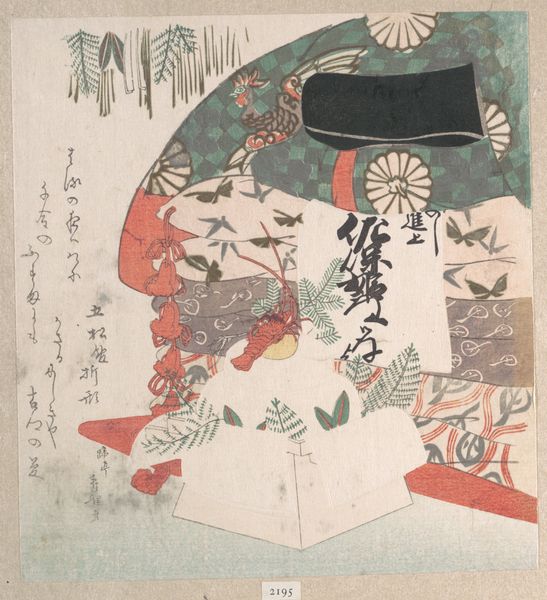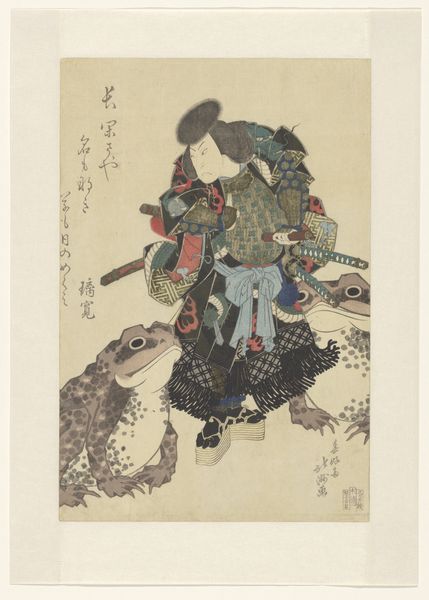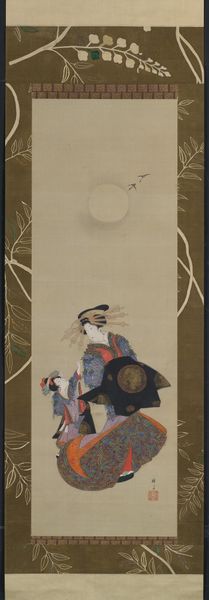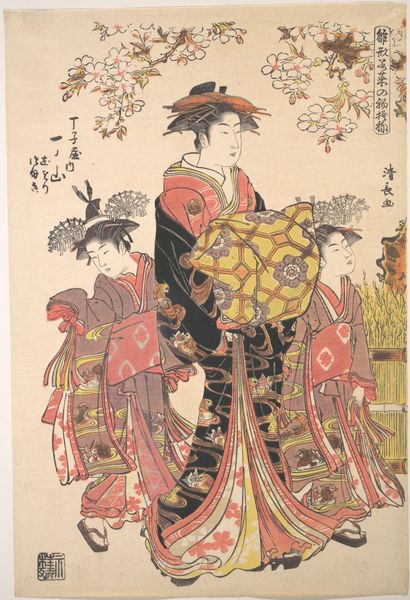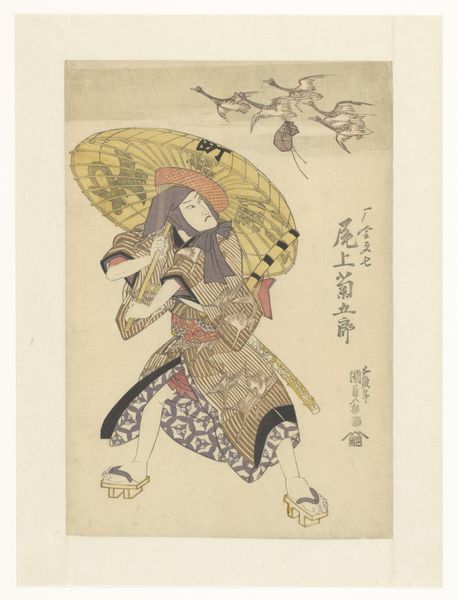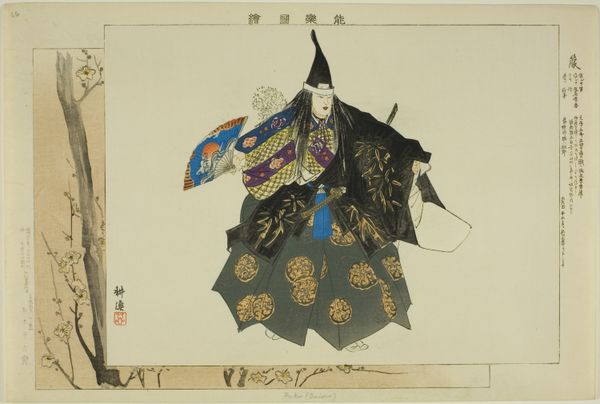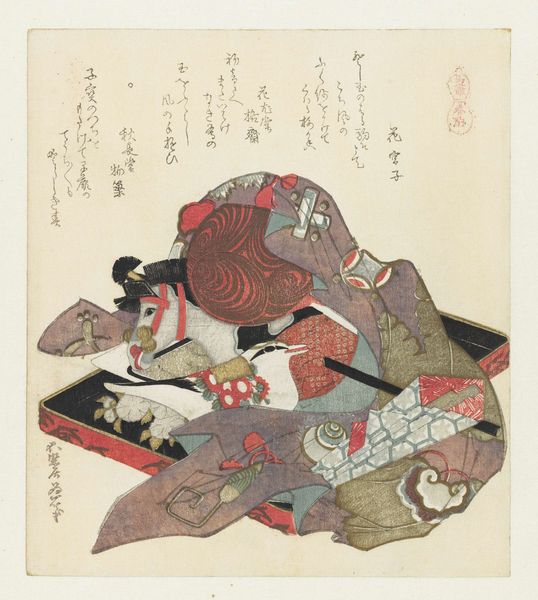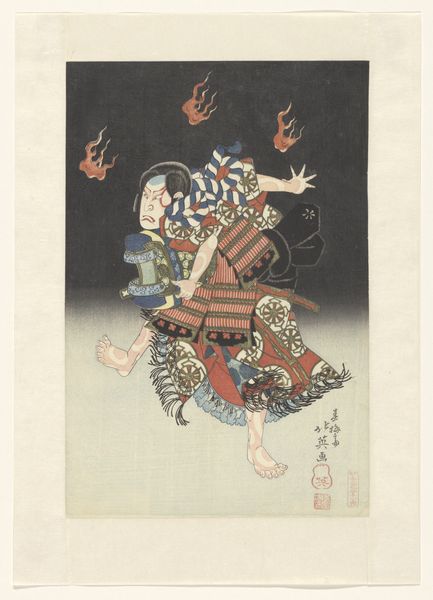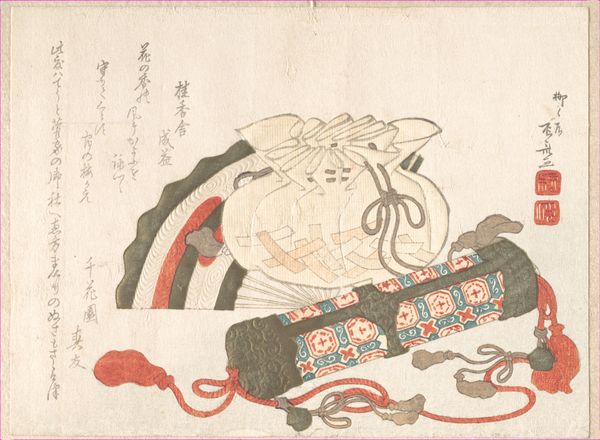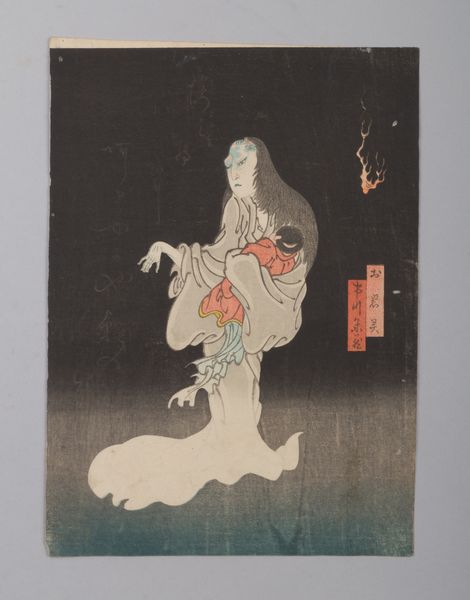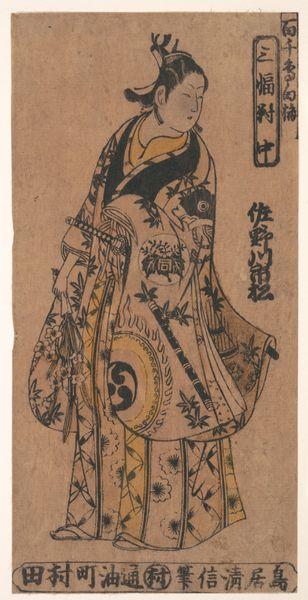
Kamo, from the series "Pictures of No Performances (Nogaku Zue)" 1898
0:00
0:00
Dimensions: Approx. 25.2 × 37.4 cm (10 × 14 4/3 in.)
Copyright: Public Domain
Curator: Tsukioka Kōgyo's "Kamo, from the series 'Pictures of No Performances (Nogaku Zue)'," created in 1898, presents a compelling figure through the medium of a woodblock print. The piece is currently held at the Art Institute of Chicago. Editor: Striking! My immediate reaction is to the sheer vibrancy of the color, especially the flaming orange hair contrasted against the somber blacks and blues of the costume. There's a real sense of drama here. Curator: The figure portrayed is associated with Noh theater, a highly stylized form of Japanese drama that blends music, dance, and acting. The 'Pictures of No Performances' series documented various characters and moments from these plays, reflecting a renewed interest in traditional arts during the Meiji period. Editor: So it's documenting and, in a way, preserving a cultural tradition at a time when Japan was rapidly modernizing and perhaps looking Westward? That gives the piece an interesting layer of socio-political weight. Who was Kamo supposed to be? Curator: Kamo, as presented here, draws upon the Noh play of the same name which centres upon themes of family obligation. It is an extremely intricate performance where he mourns his dead child, eventually finding a profound resolution and attaining enlightenment, ending with great catharsis. Editor: Considering that origin and what Kamo undergoes, it brings an important sense of humanity to a stylized work. His mask hides him and presents him, creating that drama that I saw initially. How the theater form engages with mourning in this work really makes one consider how we address grief. Curator: Absolutely. Moreover, understanding that woodblock prints like these were often produced and circulated amongst a growing middle class shows the widening appreciation for Japanese traditional performing arts during this time. It speaks to the broader role that these artistic styles held within communities. Editor: So this isn't just about a single character, it's also a lens into how art and tradition circulate within society, influencing identity and perhaps even resistance to complete Westernization? A reminder that art is always embedded in broader social narratives. Thank you for revealing its multi-layered context to me. Curator: And thank you for providing insights into the performance's relevance in society. These characters really come to life when we contextualize their significance through an historical and intersectional lens.
Comments
No comments
Be the first to comment and join the conversation on the ultimate creative platform.

